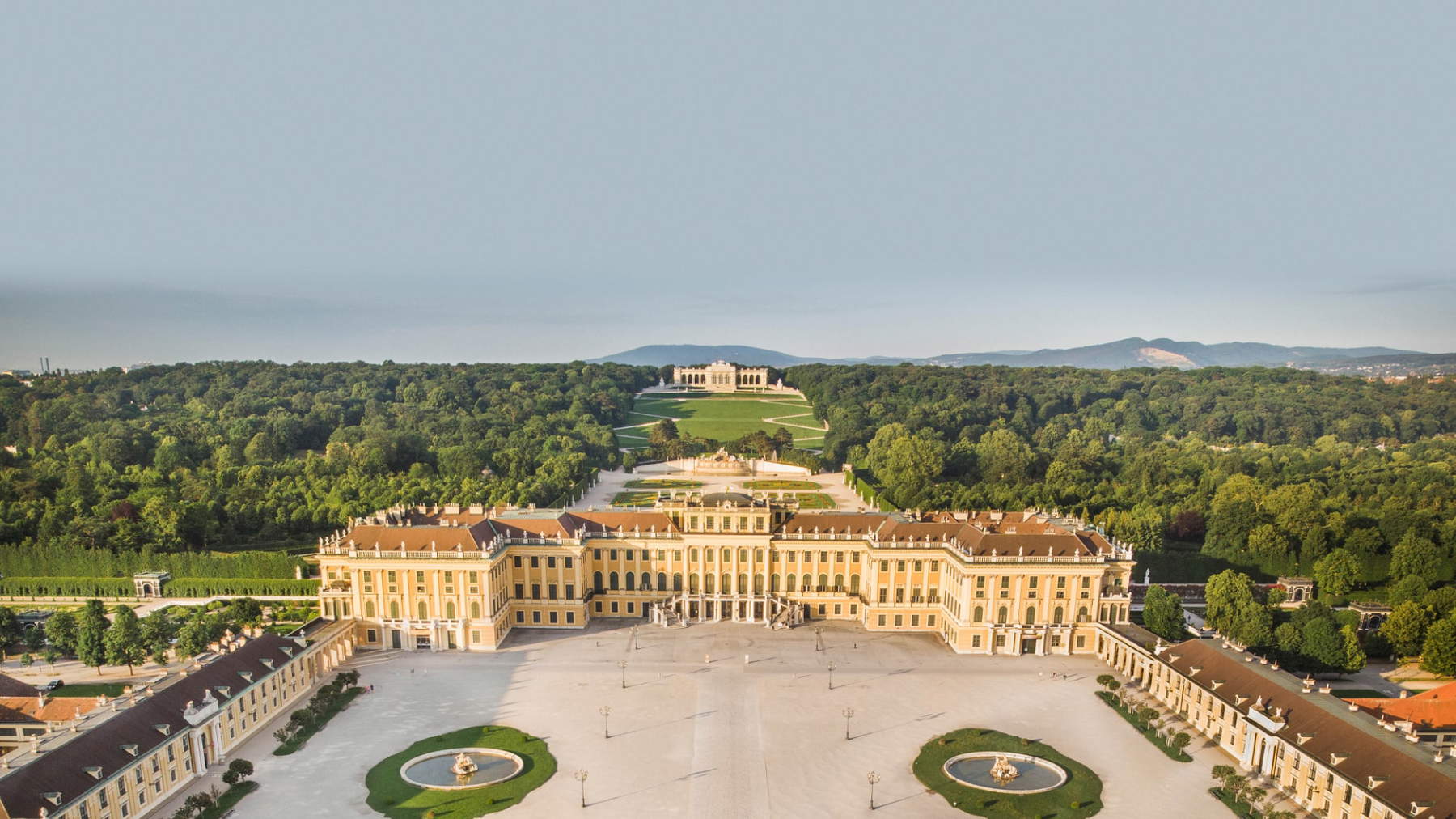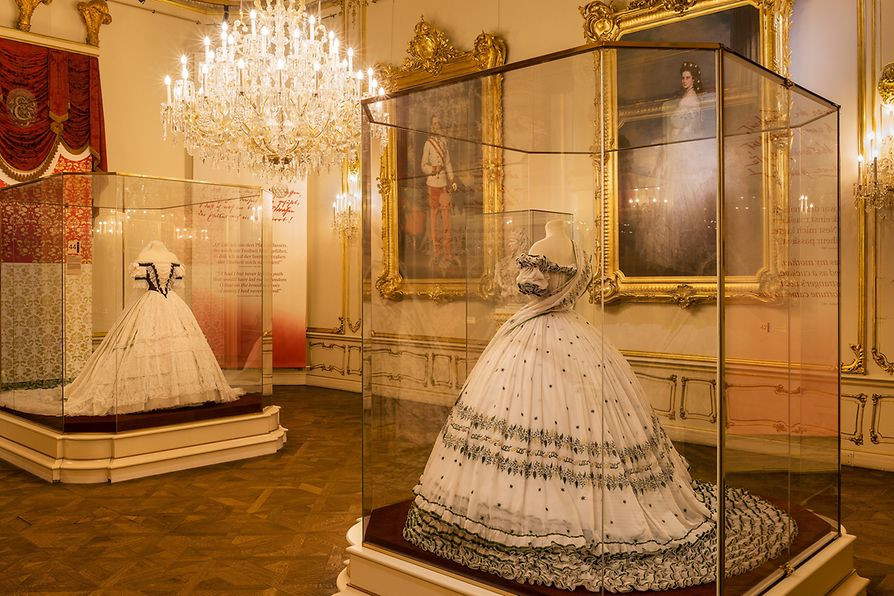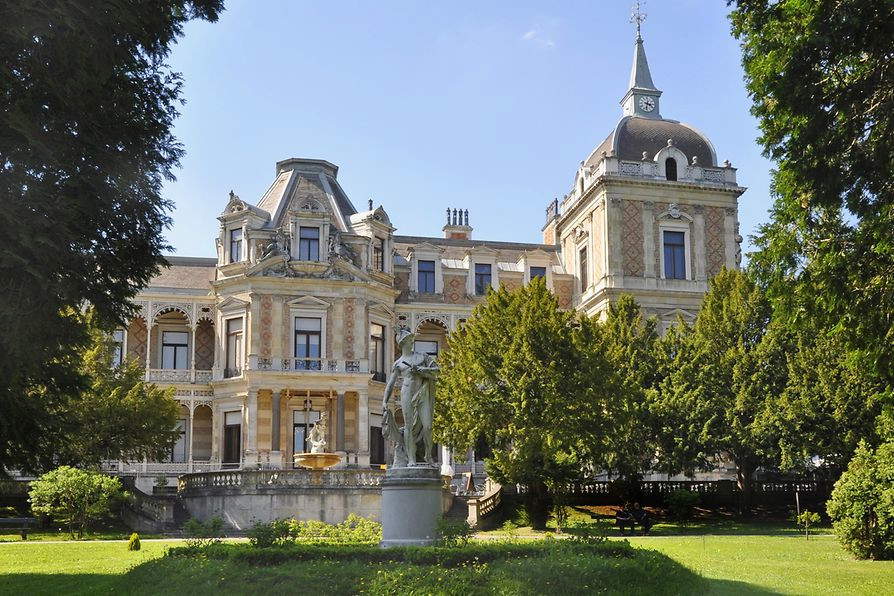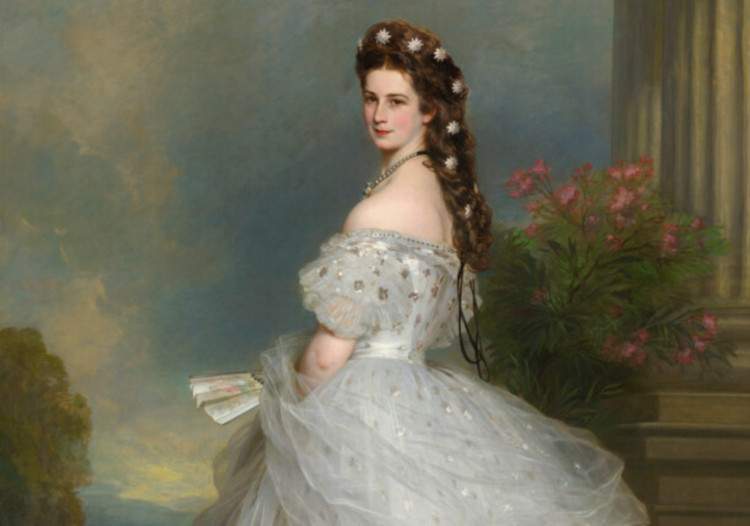Duchess of Bavaria and later Empress of Austria, the story of Elisabeth Amalia Eugenie of Wittelsbach, better known as Sisi, has enchanted little girls and women of all generations, even if in reality her existence was not so happy with her handsome Franz Joseph, aka Franz. Theirs was love at first sight, but imperial married life was not the happiest: he always busy with state affairs, she a lover of nature and long rides with her horses, of reading and traveling, but above all of freedom; the young Elisabeth, who became empress when she was only 16, felt imprisoned by the etiquette of the court in Vienna and the less than serene relationship with her mother-in-law. She also had to cope first with the death of her eldest daughter and later with the suicide of her son Rudolf; she then fell into depression, already tried by her lung disease. And finally the tragic death, her murder, perhaps only by coincidence. Movies, cartoons, TV dramas and recently even a Netflix series have been dedicated to her story, but undoubtedly the fascination for this controversial and unhappy female character exploded with Romy Schneider ’s famous performance as the young empress in the trilogy that began in 1955. It seems that it is from this trilogy that the name Sissi written with a double S derives: in fact, it would be more correct to write Sisi.


To retrace her story, there are many places in Vienna that speak of Sisi, starting with Schoenbrunn Palace, just outside the center of the Austrian capital. Here, in one of Austria’s most beautiful buildings, Sisi and Emperor Franz Joseph lived. The former summer residence of the Habsburgs, the palace has 1441 rooms in the Rococo style, although those that can be visited number about forty-five. You can choose to visit all the rooms on the main floor or focus only on the imperial tour, namely the apartments of Franz and Sisi: Among the most beautiful rooms on this itinerary are the Billiard Room, which introduces the emperor’s private apartments; the Walnut Room used by the emperor as an audience room; his Studiolo; the Ketterl Room where Eugen Ketterl, Franz Joseph’s personal valet-de-chambre, lived; and the Imperial Bedroom and Bedchamber furnished on the occasion of the marriage between Franz and Sisi in 1854 in the “rococo revival” style. Sisi’s rooms include the Staircase Room where the Empress wrote letters and read, the Dressing Room and Bedroom, and the Reception Hall. Then there is the dining room reserved for the imperial couple and their children, the Hall of Mirrors and the Grand Gallery. Since 1996, the Castle and Park have been on the UNESCO World Heritage List: in addition to the park with its splendid fountains, the Orangery, the Imperial Carriage Museum where the empress’s clothes and personal belongings are also kept, and the zoo, which is the oldest in the world, are worth seeing.
TheHofburg was also Vienna’s imperial residence and is considered one of the largest residential complexes in the world with its eighteen wings, nineteen courtyards, and two thousand six hundred rooms. The Imperial Apartments, the private and official rooms of the couple, their children and the entire court, furnished in the Rococo style with stucco decorations, Bohemian crystal chandeliers and tiled stoves, can be visited here. Among the most fascinating rooms on the tour are the dining room, Sisi’s toilet and bathroom, and the gymnastics room. Inside the Hofburg Imperial Apartments is the Sisi Museum, where the life of the empress is told through the reproduction of her living environment and her rebellion against court life, from which she found solace in travel, reading and sports. More than three hundred pieces are on display including original dresses, the watercolor color box, a miniature writing desk; as well as the harp Elisabeth played as a child in Bavaria and reconstructions of the dress she wore on the eve of her wedding and the one she wore at her Hungarian coronation. The funeral mask of the murdered empress and the black heron-feather coat with which the empress was covered after the attempt on Lake Geneva can also be seen. Not far from the Hofburg, in the Kohlmarkt, is still the bakery where Sisi had her beloved candied violets and her violet ice cream that she could not resist bought and brought.
In the Lainzer Tiergarten Nature Reserve, on the other hand, is Villa Hermes, the late-romantic building that the emperor gave to Sisi to keep her more and more willingly in Vienna. The little castle was built by Carl von Hasenauer, the architect of the Ringstrasse, from 1882 to 18866, and was named for the statue of Hermes placed in the garden. Inside, on the second floor, an exhibition tells the story of the building and its inhabitants, including that of Franz and Sisi, through many personal items and original furniture.



To visit the place where the couple were married, one must go to the Augustinian Church, but on the occasion of the wedding Baron Carl Freiherr von Sothen had the Sisi Chapel, Vienna’s first neo-Gothic building designed by architect Johann A. Garben. The Chapel, surrounded by English gardens, was to commemorate the historic event, but was also to serve as a future burial place for the commissioner and his wife Franziska.
The graves of Franz Joseph and Sisi, on the other hand, are located in the Emperors’ Crypt under the Capuchin Church, where nearly 150 Habsburg rulers are buried from 1633 onward. The last emperor buried here is actually Franz Joseph in 1916. In addition to Sisi, Crown Prince Rudolf, who committed suicide, is also buried here.
A monument is also dedicated to the empress: it was made of marble by architect Friedrich Ohmann and is located in the Volksgarten, the park along the Ringstrasse known for its great variety of roses. “To the unforgettable Empress Elisabeth the Austrian people erected this monument in 1907 with undiminished love and loyalty,” is written on the monument’s base. The architect depicted her seated, in the center of an architectural setting. Before its realization, two competitions were held, in which about seventy designs participated, and once Ohmann’s design was chosen out of competition, the discussion shifted to its placement. In the end it was Franz himself who decided on it, and at that point the architect designed that part of the Volksgarten as well.
Finally, the Museum of Furniture, located in Andreasgasse in the seventh district, houses the permanent exhibition Sissi im Film with reconstructions of settings and costumes from Romy Schneider’s trilogy dedicated to the empress. Also present are set photos, playbills, and film fragments. A curiosity: neither Schoenbrunn Palace nor the Hofburg was allowed for indoor filming of the movies. The scenes were mostly shot in Vienna’s Rosenhugelstudios, drawing period furniture from the Furniture Museum’s vast collection.
The tour in the footsteps of Sisi can be concluded fifteen kilometers from Vienna, at Laxenburg Castle, for centuries the favorite summer residence of the imperial family. Here, and in particular at Franzensburg Castle, opened in 1801 and built on an artificial island in the lake in imitation of a medieval building, Sisi spent his honeymoon after his lavish marriage to Emperor Franz Joseph, and always here he indulged in long rides in the castle woods.
For more info on Sisi’s places visit austria.info





 |
| The places of Empress Sisi: an itinerary in her footsteps in Vienna |
Warning: the translation into English of the original Italian article was created using automatic tools. We undertake to review all articles, but we do not guarantee the total absence of inaccuracies in the translation due to the program. You can find the original by clicking on the ITA button. If you find any mistake,please contact us.